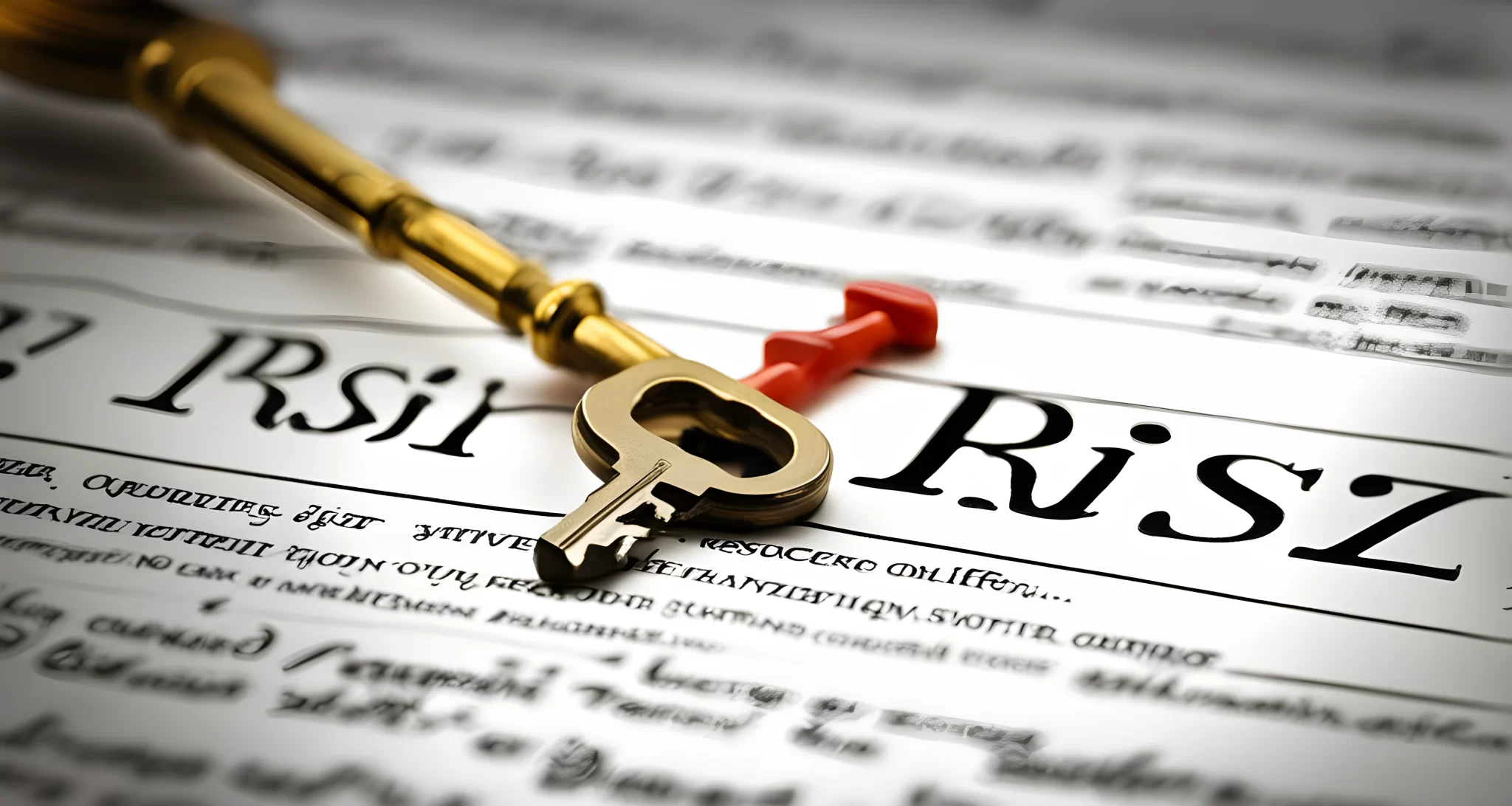Introduction to Risk Mitigation for Business Success
Risk mitigation is a crucial aspect of business success, as it involves identifying potential risks, assessing their impact, and creating a plan to minimize their damage to the company. A well-planned risk mitigation strategy can help a company respond effectively to any potential risk, allowing it to continue operating smoothly even in challenging circumstances.
In today’s business environment, companies are faced with a wide range of risks that can impact their operations, including regulatory compliance issues, confidentiality breaches, and operational disruptions. Without a comprehensive risk mitigation plan in place, companies may find themselves vulnerable to these risks, which can have serious consequences for their bottom line.
By implementing a robust risk mitigation strategy, businesses can proactively identify potential risks and take steps to minimize their impact. This involves continually monitoring and improving risk mitigation plans to ensure that they remain effective in the face of changing circumstances.
For example, in the context of regulatory compliance, effective risk mitigation strategies can help businesses stay ahead of changes in laws and regulations, ensuring that they remain in compliance and avoid costly penalties. Managing literacy program risks.
Overall, understanding the components of a risk mitigation plan and the importance of risk mitigation in regulatory compliance is essential for maintaining confidentiality and trust within an organization. By continually monitoring and improving risk mitigation plans, businesses can effectively navigate potential risks and set themselves up for long-term success.

Components of a Risk Mitigation Plan
A risk mitigation plan comprises several key components that are essential for successful risk management. These components work together to identify, assess, prioritize, address, and monitor potential risks to ensure the safeguarding of operations and minimizing potential damage.
Identification of Possible Risk Events
The first step in developing a risk mitigation plan is to identify possible risk events that could impact the business. This involves conducting a thorough assessment of internal and external factors that could pose a threat to the company’s objectives and operations.
Assessment of Potential Impact
Once potential risk events have been identified, it is crucial to assess their potential impact on the business. This involves evaluating the likelihood of each risk event occurring and the potential severity of its impact on the company’s operations, finances, and reputation.
Prioritization of Risks Based on Severity
After assessing the potential impact of each risk event, it is important to prioritize risks based on their severity. This allows the company to focus its resources and attention on addressing the most critical risks first, ensuring that the most significant threats are dealt with effectively.
Implementation of Actionable Plans
Once risks have been identified and prioritized, actionable plans must be implemented to address and mitigate them. These plans should outline specific steps and strategies for mitigating each risk, as well as assigning responsibility for their execution.
Continual Monitoring and Refinement
Finally, continual monitoring and refinement of the mitigation plans are crucial for ensuring ongoing effectiveness. This involves regularly reviewing and updating the risk mitigation strategies in response to changes in the business environment or new potential risks that may arise.
In conclusion, a comprehensive risk mitigation plan is essential for protecting a company from potential threats and ensuring ongoing success. By identifying possible risk events, assessing their impact, prioritizing risks, implementing actionable plans, and continually monitoring and refining these plans, businesses can effectively manage risks and minimize their impact on operations. For more information on managing risk in other areas such as investments, check out Investment Success Strategies.

The Importance of Risk Mitigation in Regulatory Compliance
When it comes to risk mitigation, regulatory compliance is a crucial aspect that businesses cannot afford to overlook. Different industries and regions have unique regulations that must be adhered to, and a quality risk mitigation plan can help ensure that a company meets these requirements. By maintaining compliance, a company can prevent incurring fees and build confidence with partners, further strengthening its position in the market.
In the context of regulatory compliance, effective risk mitigation strategies are essential for businesses to operate within the boundaries of the law. This is particularly important for consulting firms, as they often deal with sensitive client information and must adhere to strict regulations. For example, in the article "Effective risk management consultants," experts discuss the importance of implementing robust risk mitigation plans to ensure compliance with industry regulations Effective risk management consultants. These strategies not only protect the firm from potential legal issues but also build trust with clients by demonstrating a commitment to upholding industry standards.
Furthermore, regulatory compliance is not just about avoiding penalties—it also plays a significant role in building a positive reputation in the market. Companies that consistently meet regulatory requirements are seen as reliable and trustworthy partners, which can open up new opportunities for growth and collaboration. By integrating risk mitigation into their operations, businesses can demonstrate their commitment to ethical practices and gain a competitive advantage in their respective industries.
In summary, risk mitigation is integral to achieving regulatory compliance, which is essential for businesses to operate within legal boundaries and maintain their reputation in the market. By implementing effective risk mitigation strategies, companies can safeguard their operations, minimize potential damage, and ensure that they comply with industry regulations. This not only prevents financial loss but also fosters trust with partners and clients, ultimately contributing to the overall success of the business.

Maintaining Confidentiality and Trust through Risk Mitigation
Maintaining confidentiality and trust are critical aspects of risk mitigation in business. A well-designed risk mitigation plan can help protect sensitive company data and demonstrate a commitment to safeguarding the interests of customers and stakeholders.
One of the key ways that risk mitigation helps maintain confidentiality and trust is by implementing robust security measures to prevent unauthorized access to sensitive information. This can include encryption, access controls, and regular security audits to ensure that data is protected from potential breaches. By doing so, companies can assure their customers and stakeholders that their private information is safe and secure.
In addition to protecting data, risk mitigation also plays a crucial role in building and maintaining trust with customers, partners, and the broader community. When a company demonstrates a proactive approach to identifying and addressing potential risks, it shows a commitment to transparency and accountability. This can enhance the company’s reputation and competitive edge in the market.
Furthermore, by prioritizing risk mitigation, companies show that they are dedicated to upholding regulatory compliance standards. This not only helps protect sensitive information but also ensures that the company operates within legal parameters, further enhancing trust with stakeholders.
To learn more about the importance of risk mitigation in project management, check out our article on Project Management Risk Control. This resource provides valuable insights into how risk mitigation can be applied specifically within the context of project management, offering practical strategies for addressing potential risks and maintaining confidentiality and trust throughout the project lifecycle.
In summary, maintaining confidentiality and trust through effective risk mitigation measures is essential for demonstrating a commitment to protecting sensitive information, building trust with stakeholders, and enhancing overall business success. By continually monitoring and improving risk mitigation plans, companies can work towards creating a secure and trustworthy environment for all stakeholders involved.

Continual Monitoring and Improvement of Risk Mitigation Plans
Continuous monitoring and improvement of risk mitigation plans are vital for ensuring their effectiveness. Risks and their potential impacts can change over time, and new risks may emerge. Therefore, it is essential for companies to continually monitor and refine their risk mitigation plans to ensure that they remain effective in addressing and minimizing potential risks.
Adapting to Change
As mentioned in the Importance of risk management article, businesses operate in dynamic environments where risks are constantly evolving. By continuously monitoring their risk mitigation plans, companies can adapt to changing circumstances and identify any new risks that may have emerged. This proactive approach allows organizations to stay ahead of potential threats and take necessary actions to mitigate them before they escalate.
Identifying Weaknesses
Regularly reviewing risk mitigation plans enables companies to identify any weaknesses or gaps that may exist. This process allows organizations to pinpoint areas where improvements can be made, whether it’s updating existing strategies or implementing entirely new measures to address specific risks. By addressing these weaknesses, companies can enhance the overall effectiveness of their risk mitigation efforts.
Staying Compliant
In the realm of regulatory compliance, ongoing monitoring and improvement of risk mitigation plans are crucial. Regulations and compliance requirements can change over time, necessitating adjustments to existing risk management strategies. By continuously evaluating and refining their plans, companies can ensure that they remain compliant with relevant laws and regulations, thus avoiding potential legal issues and penalties.
Maintaining Proactive Risk Management
Continual monitoring of risk mitigation plans allows organizations to maintain a proactive stance in managing risks. Instead of reacting to crises as they arise, companies can anticipate potential threats and take pre-emptive measures to minimize their impact. This approach not only helps in preventing disruptions but also contributes to the overall stability and resilience of the business.
In conclusion, continual monitoring and improvement of risk mitigation plans are essential for businesses seeking long-term success. By staying vigilant and adaptable, companies can effectively manage risks while also maintaining compliance with regulations and industry standards.
FAQ
What is the purpose of a risk mitigation plan?
The purpose of a risk mitigation plan is to ensure that a company correctly identifies and responds to any potential risk. it includes identifying possible risk events, assessing their impact, prioritizing each identified risk, implementing actionable plans, and continually monitoring and refining risk mitigation plans.
Why is risk mitigation essential for businesses?
Risk mitigation is essential for businesses to maintain regulatory compliance, prevent incurring fees, and build confidence with partners. a well-planned risk mitigation strategy can help a company respond effectively to any potential risk, allowing it to continue operating smoothly even in challenging circumstances.
What are the components of a risk mitigation plan?
The components of a risk mitigation plan include identifying possible risk events, assessing their potential impact, prioritizing each identified risk, implementing actionable plans to address and mitigate the risks, and continually monitoring and refining the plans.
How can a risk mitigation plan help with regulatory compliance?
A quality risk mitigation plan can help maintain compliance with regulations unique to the industry and region of a business, preventing incurring fees and building confidence with partners.
